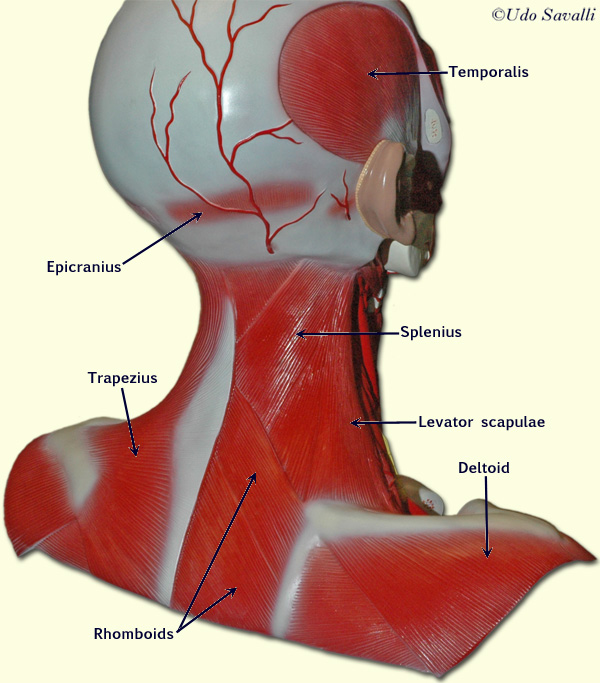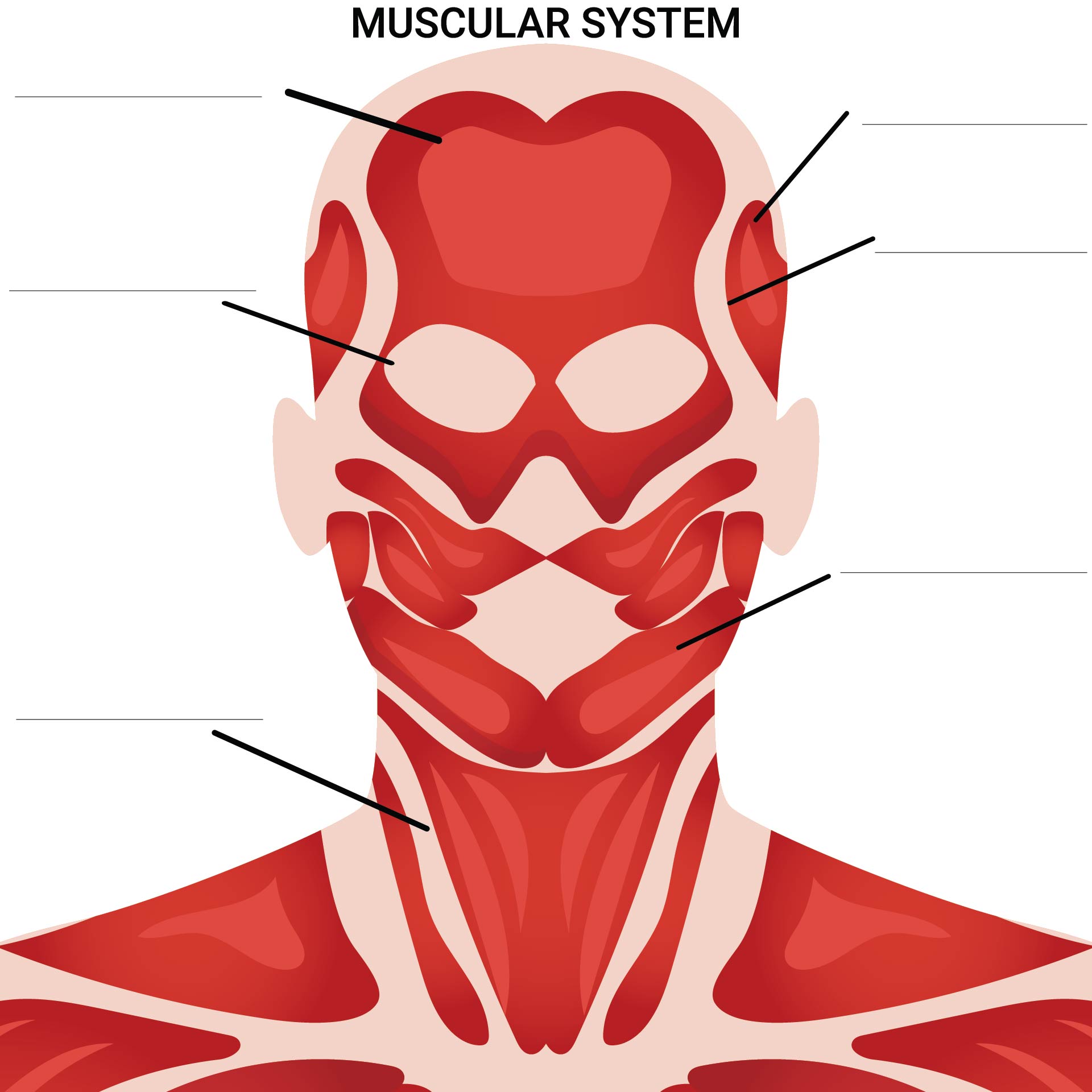

This muscle allows you to whistle, blow, and suck and it contributes to the action of chewing. The physicians originally studying human anatomy thought the skull looked like a helmet.Ī large portion of the face is composed of the buccinator muscle, which compresses the cheek. Instead, the two bellies are connected by a broad tendon called the epicranial aponeurosis, or galea aponeurosis (galea = “helmet”). In other words, there is a muscle on the forehead ( frontalis) and one on the back of the head ( occipitalis), but there is no muscle across the top of the head. The muscle has a frontal belly and an occipital (near the occipital bone on the posterior part of the skull) belly. The occipitofrontalis muscle moves up the scalp and eyebrows. The orbicularis oris is a circular muscle that moves the lips, and the orbicularis oculi is a circular muscle that closes the eye.

#Neck diagram muscles skin#
Because the muscles insert in the skin rather than on bone, when they contract, the skin moves to create facial expression ( Figure 11.7).įigure 11.7 Muscles of Facial Expression Many of the muscles of facial expression insert into the skin surrounding the eyelids, nose and mouth, producing facial expressions by moving the skin rather than bones. The insertions of these muscles have fibers intertwined with connective tissue and the dermis of the skin. The origins of the muscles of facial expression are on the surface of the skull (remember, the origin of a muscle does not move). The first grouping of the axial muscles you will review includes the muscles of the head and neck, then you will review the muscles of the vertebral column, and finally you will review the oblique and rectus muscles. Some of the axial muscles may seem to blur the boundaries because they cross over to the appendicular skeleton.

The axial muscles are grouped based on location, function, or both. This system reflects the bones of the skeleton system, which are also arranged in this manner. The skeletal muscles are divided into axial (muscles of the trunk and head) and appendicular (muscles of the arms and legs) categories. Identify the movement and function of the face, head, and neck muscles.Identify the axial muscles of the face, head, and neck.By the end of this section, you will be able to:


 0 kommentar(er)
0 kommentar(er)
